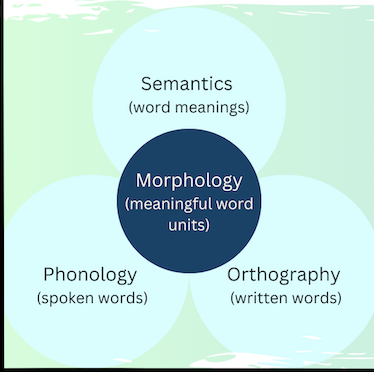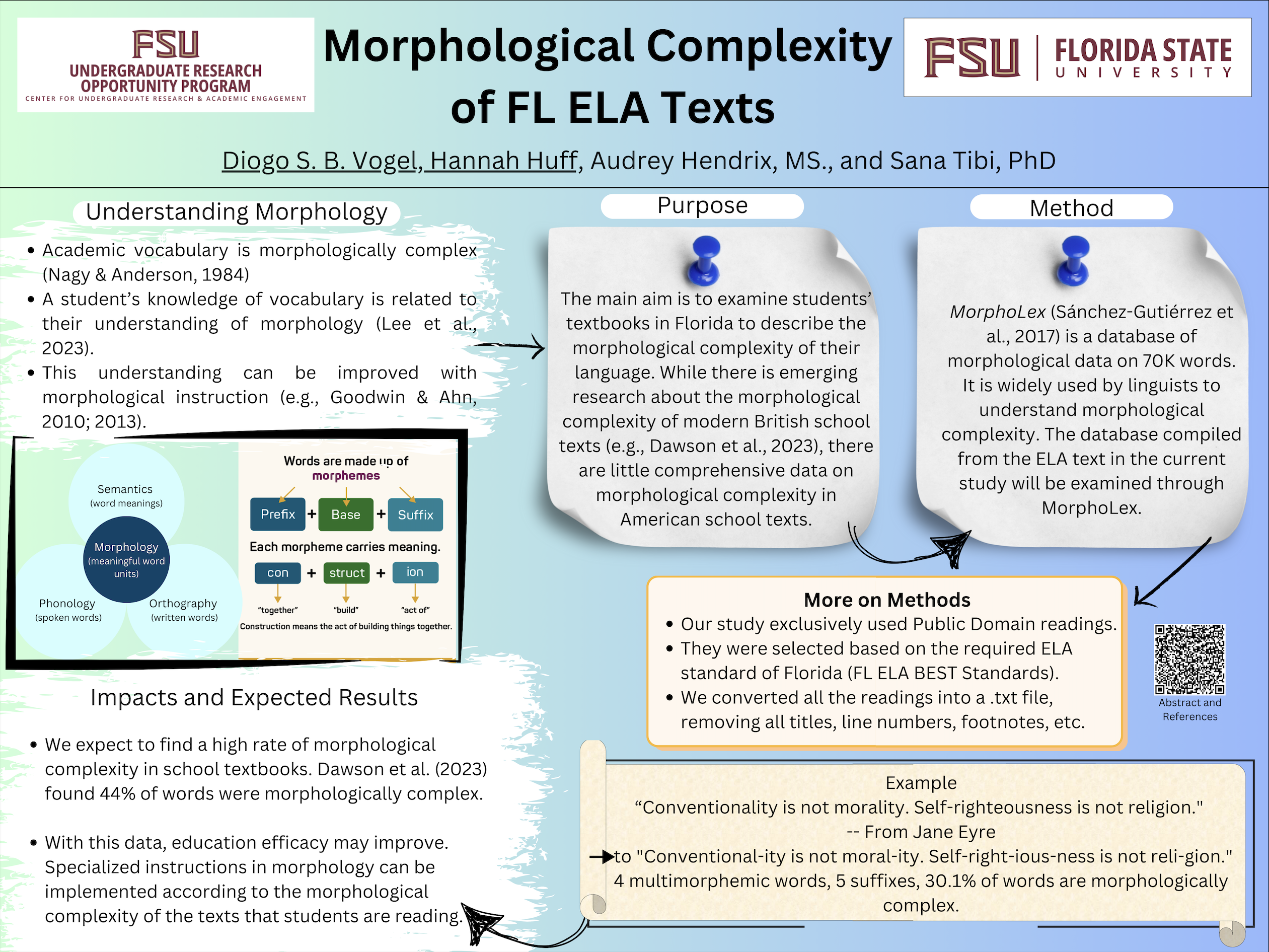Research Symposium
25th annual Undergraduate Research Symposium, April 1, 2025
Hannah Huff Poster Session 4: 3:00 pm - 4:00 pm/ Poster #36

BIO
I am a sophomore majoring in psychology on a pre-Physician Assistant track. I became involved in this research project because of its potential to create a positive impact on disadvantaged students. Beyond academics and research, I am an active member of the Seminole Dance Force club team and Delta Zeta. I am passionate about blending my interests in psychology and healthcare to support vulnerable communities in my future career.
Morphological Complexity of FL ELA Texts
Authors: Hannah Huff, Audrey HendrixStudent Major: Psychology
Mentor: Audrey Hendrix
Mentor's Department: School of Communication Science and Disorders Mentor's College: College of Communication and Information Co-Presenters: Diogo Vogel
Abstract
Morphemes are the smallest meaningful units of language (Carlisle, 2003). A word is morphologically complex when it includes more than one morpheme, often in the form of affixes (prefixes or suffixes) added to root or base words. Academic language is morphologically complex (Nagy & Anderson, 1984). A student’s ability to read morphologically complex language is correlated with their understanding of morphology, which can be improved through explicit instruction (Goodwin et al, 2010). While recent studies have investigated the morphological content of British children’s books (e.g., Dawson et al., 2023), American educators lack current, detailed information on the morphology of American English Language Arts (ELA) text. Our research question is as follows: What percentage of words in a corpus, or collection, of ELA texts have one or more affixes when compared against a morphological database? We will analyze public-domain English Language Arts texts recommended in Florida’s educational standards . The texts will be compiled into a corpus from which individual words will be compared against the MorphoLex (Sanchez-Gutiérrez et al., 2017) database to determine their morphological complexity. Words found in both our corpus and MorphoLex will be compared by the number of affixes they contain. We expect to find that between 45-55% of words in our corpus will have one or more affixes, making them morphologically complex. This study may shed light on the complexity of American ELA texts. The instructional implication of such data may significantly improve students' learning experiences.
Keywords: Morphological Complexity


